Period: Open year-round
Business Hours: April 1 - October 31: 9:00 - 17:00 / November 1 - March 31: 9:00 - 15:30
Admission: Adults 1,000 yen / Junior & Senior High School Students / Seniors 65 and over 800 yen / Elementary School Students 600 yen
*The listed prices and business hours are current as of January 9, 2020.
![[Historic Site: Osarizawa Mine] A hidden gem tourist spot in Akita, a gold mine with 1,300 years of history](https://skyticket.com/guide/wp-content/uploads/2025/02/pixta_53820491_M-1-e1580778736244-1200x675-1200x675.jpg)
[Historic Site: Osarizawa Mine] A hidden gem tourist spot in Akita, a gold mine with 1,300 years of history
The "Historic Site: Osarizawa Mine" in Akita was a mine known for its impressive production of gold and copper, dating back from the Edo period to before World War II. It is said that the gold mined here was used in the Great Buddha of Todai-ji Temple and the Golden Hall of Chuson-ji Temple. This hidden gem is not only a must-see for those interested in industrial heritage and minerals but also for history enthusiasts. There are activities that children and women can enjoy, making it a popular spot for friends and families. Here, we will introduce the charms of the "Historic Site: Osarizawa Mine"!
table of contents
[x] close
[Historic Site: Osarizawa Mine] A hidden gem tourist spot in Akita, a gold mine with 1,300 years of history
What is Osarizawa Mine?
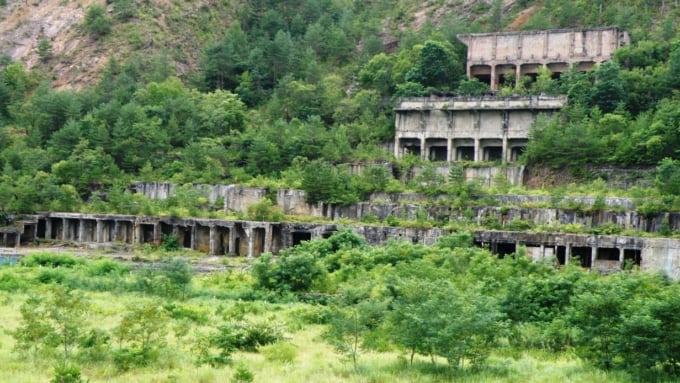
Located in Kazuno City, in the northeastern part of Akita Prefecture, Osorazawa Mine is said to have been established about 1300 years ago. After the depletion of gold and copper, the mine closed in 1978, and it has since been reborn as a valuable tourist spot where visitors can see one of Japan's largest gold and copper ore vein excavation sites.
The mined minerals totaled about 30 million tons, and the total length of the tunnels is about 800 km, a scale that is beyond imagination. By opening up the tunnels and excavation sites to the public, visitors can learn about the changes in Japan's mining industry and the preciousness of nature. There are also activities and experiences related to the large-scale mine, allowing visitors to feel the hard work of the many people who once worked there.
Tourist Tunnel Tour Course
The tunnels that you can walk through include a special course that is 1.7 km long and takes about 60 minutes, as well as a standard course that is 1.1 km long and takes about 40 minutes, so even those who are not confident in walking can enjoy the experience without difficulty. In the tunnels, you can realistically see the mining traces, transportation equipment, and office remnants, all preserved in their original forms, with the help of mannequins.
Additionally, going back to the Edo period, there are tunnels that were hand-dug without machines, and these tunnels remain in their original shape, giving you a glimpse of the Gold Rush that was once praised as the "Mountain of Gold." The ores that were brought out of the tunnels were sent to the beneficiation plant where they were processed into metal. You can also see the plant from a distance, which is recommended for those who want a better understanding of the whole Osorazawa Mine.
In the tunnels, you can also find traces of the magistrate’s office, a shrine, and places where hidden Christians once hid, surprising visitors by showing that the mine was not only a site for mining but also one closely related to daily life. The temperature inside the tunnels remains around 13°C throughout the year, so it is convenient to bring something to wear over your clothes if visiting in summer.
Panning for Pure Gold Dust
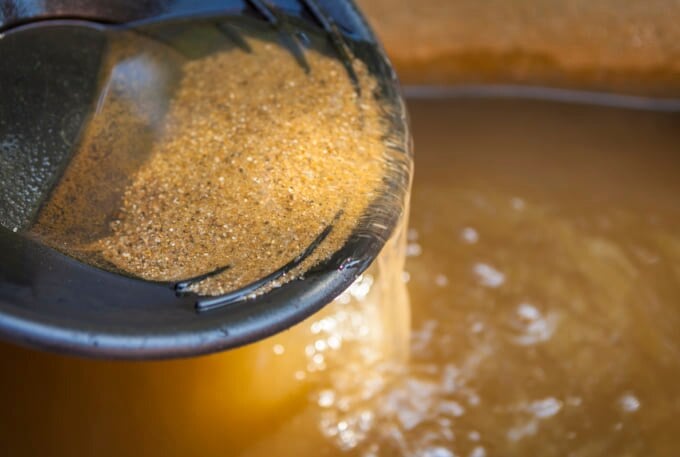
Gold dust, which is said to have led to the discovery of Osorazawa Mine, was once separated by using a pan to sift the gold based on its specific gravity. Would you like to try panning for gold dust using the same method as in the past?
This activity is very popular among both children and adults. You might get so absorbed in panning that it will be hard to stop! Some might worry about not finding any gold, but don’t worry—staff members will teach you the techniques, so you can relax. The gold dust you collect can be kept as a souvenir in a special bottle.
Period: Late April to Early November
Price: Adults 800 yen / Junior High School Students and Younger 600 yen
Time Limit: 30 minutes
*The listed prices and business hours are current as of January 9, 2020.
Gold Leaf Application Experience

You can draw your own design on a plate or chopsticks and apply gold leaf to it. The gold leaf is very thin and fragile, so please handle it carefully and slowly. This experience will leave you fully satisfied with your luxurious, one-of-a-kind creation. It also makes a perfect souvenir for someone special.
Period: Year-round
Price: Plate 950 yen / Chopsticks 750 yen
Experience Time: About 60 minutes
*The listed prices and business hours are current as of January 9, 2020.
Natural Stone Digging
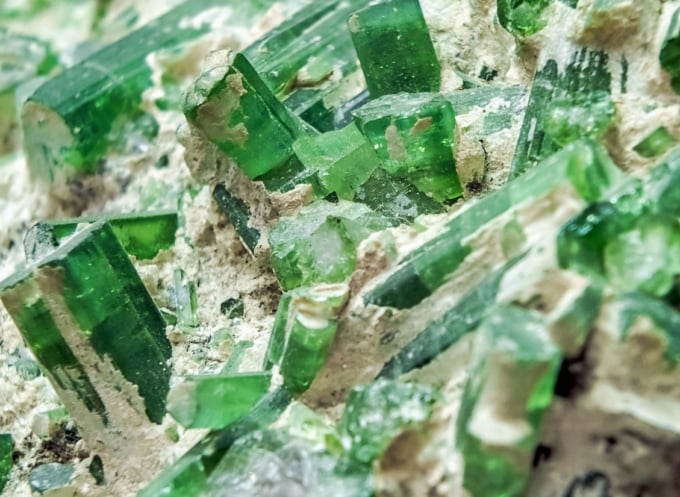
There are large containers filled with sand, and inside these, natural stones (such as quartz, tourmaline, garnet, agate, etc.) are buried. You can dig the stones out of the sand and take them home in a case. It’s like a little treasure hunt, and it’s sure to be exciting! The natural stones, known as "power stones," each have their own meaning, so try your best to find the one you’re looking for.
Period: Year-round
Price: Medium Case 850 yen / Large Case 1,000 yen / Extra-Large Case 1,500 yen
Time Limit: 20 minutes
*The listed prices and business hours are current as of January 9, 2020.
Mining History Museum
This museum is located on the grounds of the "Historic Site: Osorazawa Mine." It exhibits ores mined at Osorazawa Mine, models of the tunnels, and valuable historical materials related to mining in the Edo period. Occasionally, special exhibitions are held, where you can learn about the lives of people during the mine’s prosperous days and the town’s atmosphere. The exhibits are designed to engage children's curiosity and help adults understand the history behind the huge mountains from which gold and ore were extracted. *Admission is free / as of January 9, 2020.
Access

【By Train or Bus】
From JR Kazuno Hanawa Station, it is about a 10-minute taxi ride.
【By Express Bus】
Take the bus to Odate from Morioka Station (about 1.5 hours) and get off at Kazuno Hanawa Station, then take a taxi for about 10 minutes.
【By Car】
From Kazuno-Hachimantai IC, it is about 10 minutes. From Lake Towada, it is about 1 hour 15 minutes, and from Hachimantai, it is about 1 hour. Since the area is located in a mountainous region with heavy snowfall, please drive carefully during winter. There is a parking lot with 550 spaces available for free.
Name: Historic Site: Osorazawa Mine
Address: 13-5 Shishizawa, Osorazawa, Kazuno City, Akita 018-5202
Closed: Open year-round
Business Hours: 【Summer】 April 1 - October 31: 9:00 - 17:00 / 【Winter】 November 1 - March 31: 9:00 - 15:30
RELATED ARTICLES
REGIONS
CATEGORIES
FEATURED ON Guide
-
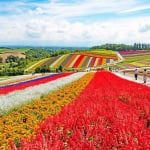
Where will you go for the summer vacation? Introducing recommended spots for domestic travel
-
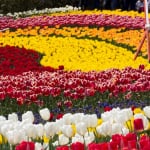
Kaizu City’s Recommended 7 Tourist Spots. Enjoy the Culture and History Nurtured by Wajū!
-
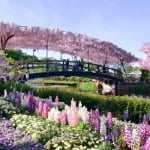
What Makes Ashikaga Flower Park So Special? A Treasure Trove of Photo-Worthy Spots!
-
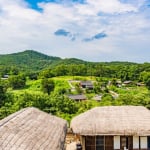
600 Years of Radiant Tradition: Korea’s Historic Villages of Hahoe and Yangdong
-
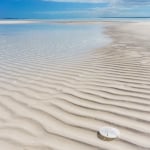
Two-Colored Seas and a Pink Beach! 4 Must-Visit Spots in North Eleuthera
MOST POPULAR ON Guide
-
 1
1Doha: Must-see Attractions in the Capital of Qatar
-
 2
2Toronto: 10 Things to do in this Picturesque Canadian City
-
 3
3Amarillo: A City Famous for It’s Amazing Canyons, Great History and Music
-
 4
4South Korea: Dazzling Scenery, Rich Culture and Fascinating History
-
 5
5Kuwait: A Country in Middle East Asia Famous for Hot Sand Dunes and Stunning Cityscape





